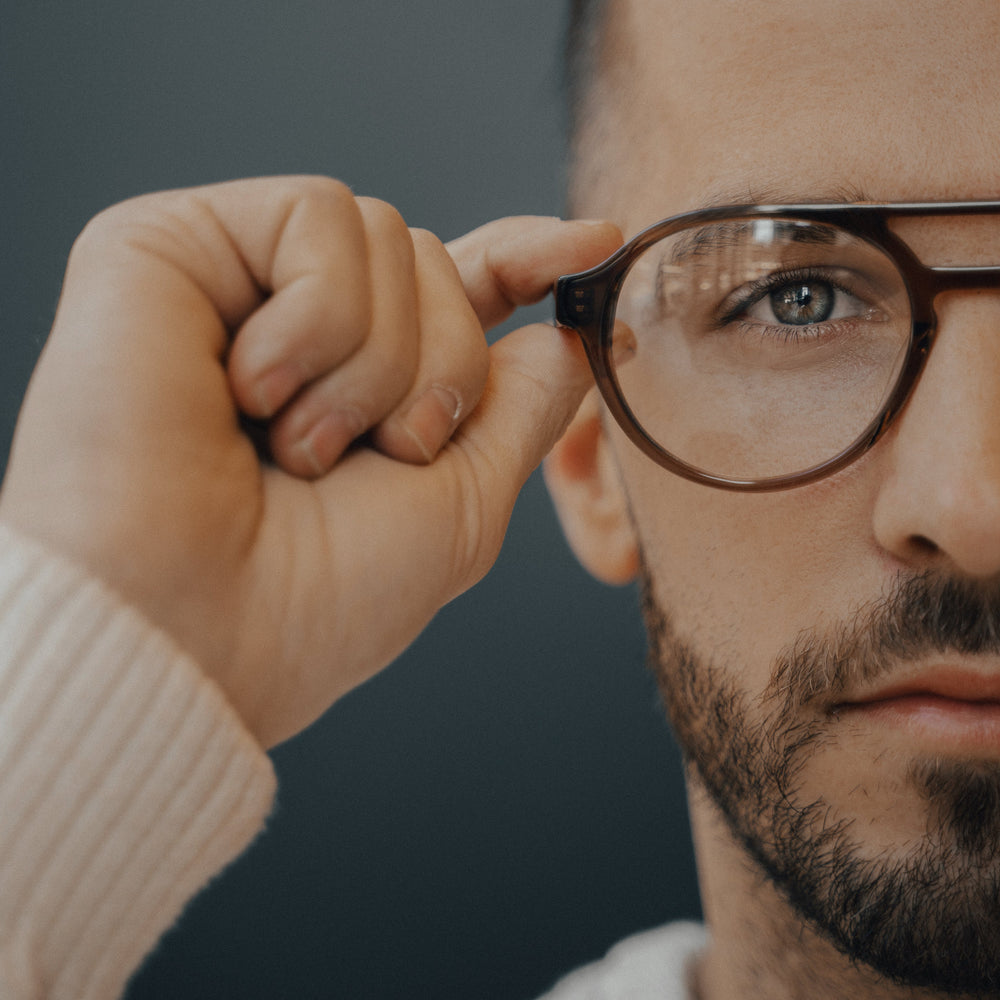LENS GUIDE - Things you need to know about your lenses
Possibly the most important part of the eyewear buying process is choosing the right glasses lenses. The quality of your lenses, their attributes and their coatings all contribute to how happy you are with your eyeglasses.
This guide to eyeglass lenses will help you better understand what options are available to you and help you choose lenses and coatings to fit your preference and lifestyle.
LENS INDEX TYPE
STANDARD INDEX (INCLUDED) - Thin and light lens
For people with somewhat stronger prescriptions, these lenses may be a better choice than the standard lenses. (Between 0.00 to +/-3.00)
1.67 HIGH-INDEX (+$50) - Super thin lens
These lightweight, thin lenses ensure your eyes do not look distorted from a higher prescription. If you have a particularly strong prescription, this is likely the best choice for you. (Between +/-3.00 to +/-6.00)
1.74 ULTRA HIGH-INDEX (+$150) - As thin as possible lens
Our thinnest lenses are designed for the highest-powered prescriptions. Any thinner and they would disappear! (Above +/-6.00)
PROTECTION TYPE
CLASSIC (INCLUDED)
Hydrophobic coating : Hydrophobic (HMC) coating keeps snow, water and fog from making your vision blur. Always keeping a sharp and clear vision of things.
Anti-Reflective coating: Anti-reflective (AR) coating improves the transmittance of light, reduces reflection from lenses, and eliminates stray lights. Basically, it lets you focus on what really deserves your attention.
Scratch Resistant treatment: This treatment (SR) reduces scratches from a busy lifestyle.
BLUE LIGHT FILTERING COATING(+$50)
The biggest source of potential harm from digital screens is blue light. This part of the visual spectrum is a short- wavelength light, which can be found in just about everything from sunshine to computer screens. Unlike blue- turquoise light, which is healthy and beneficial for us, blue-violet light, such as the high-energy visible (HEV) light from backlit screens and artificial lighting, can be damaging to our eyes after excessive exposure.
LIGHT RESPONSIVE COATING (+$125)
We offer premium Transitions™ lenses, as well as basic photochromic lenses, both of which are excellent options for those seeking light-adjusting coating for their lenses.
Anyone working in positions where they switch from indoor to outdoor environments frequently will benefit from light-adjusting coating, as well as people who are concerned about their overall eye protection from the sun. Light- adjusting glasses offer the same amount of protection as sunglasses, without requiring you to purchase and carry around an extra set of eyewear.
PRESCRIPTION
To start, book an eye exam with your optometrist before purchasing your new pair in order to have an up-to-date prescription at hand.
- Find an optometrist near you if you don’t already have a file with one.
- Specify the goal of your exam.
- Be sure to request a copy of your prescription after all, it’s your right.
- Scan or take a picture of your prescription and save it somewhere so you always have it handy.
PUPILLARY DISTANCE
Pupillary distance (PD) describes the distance between the centre of each pupil, which is essential in correcting your vision.
Ideally, your PD is measured by an eye care professional, but there is also an accurate way to virtually measure your PD with great results.
Measure the PD yourself by printing our downloadable PD ruler and following the steps along.

